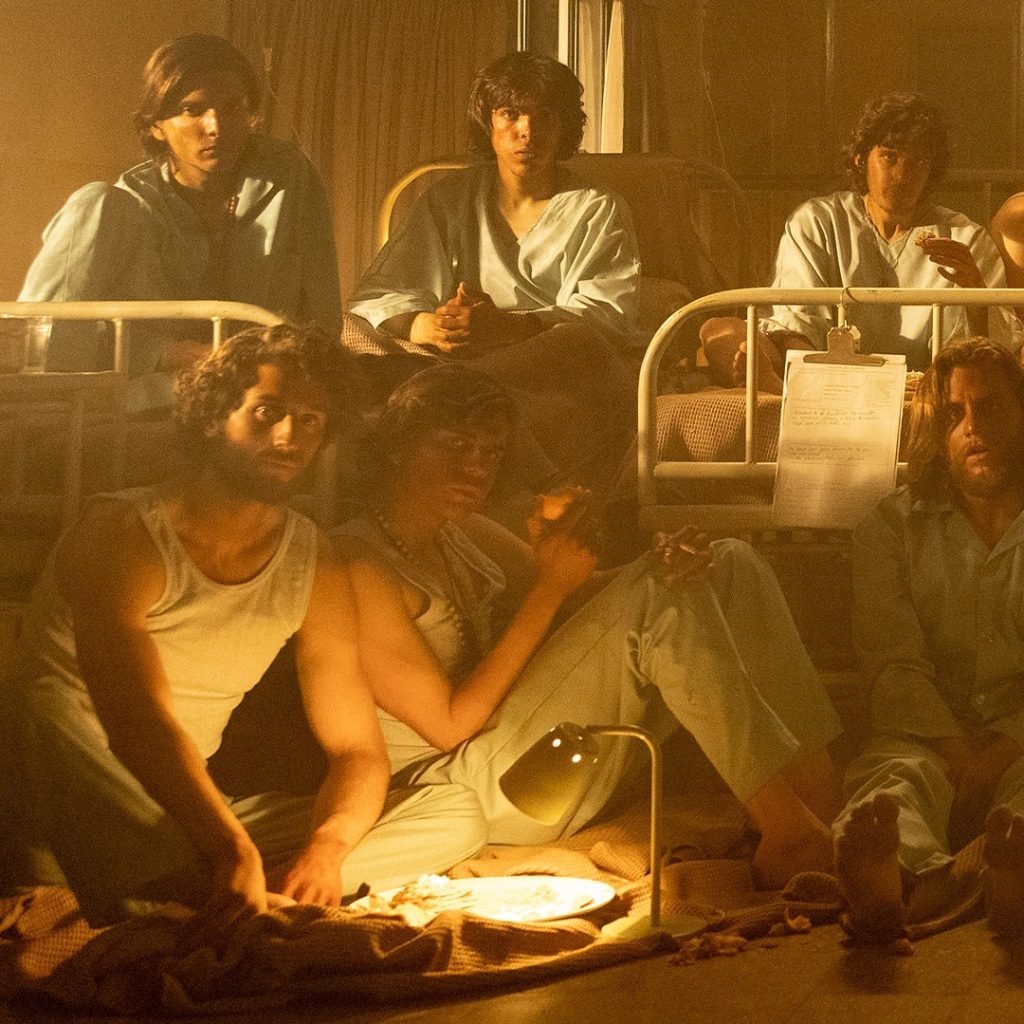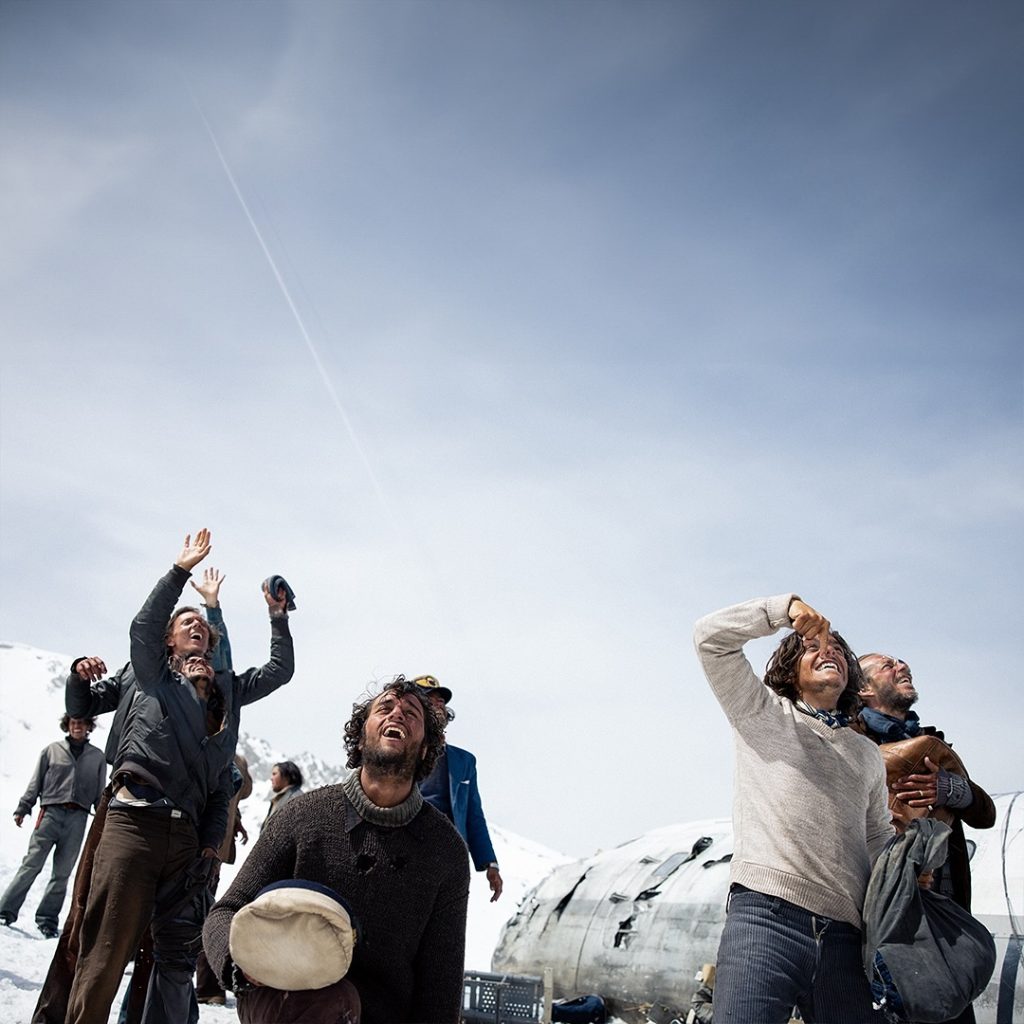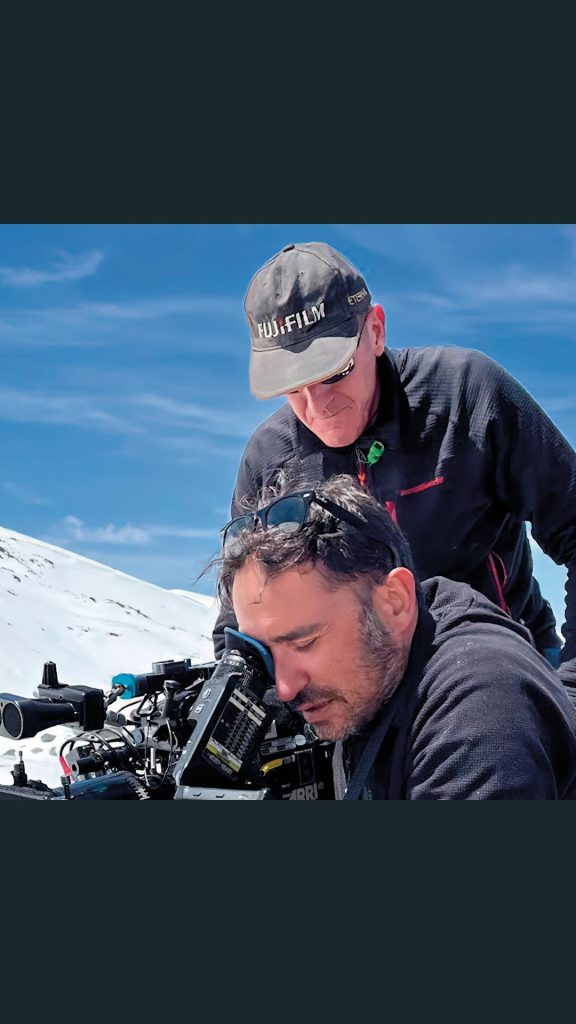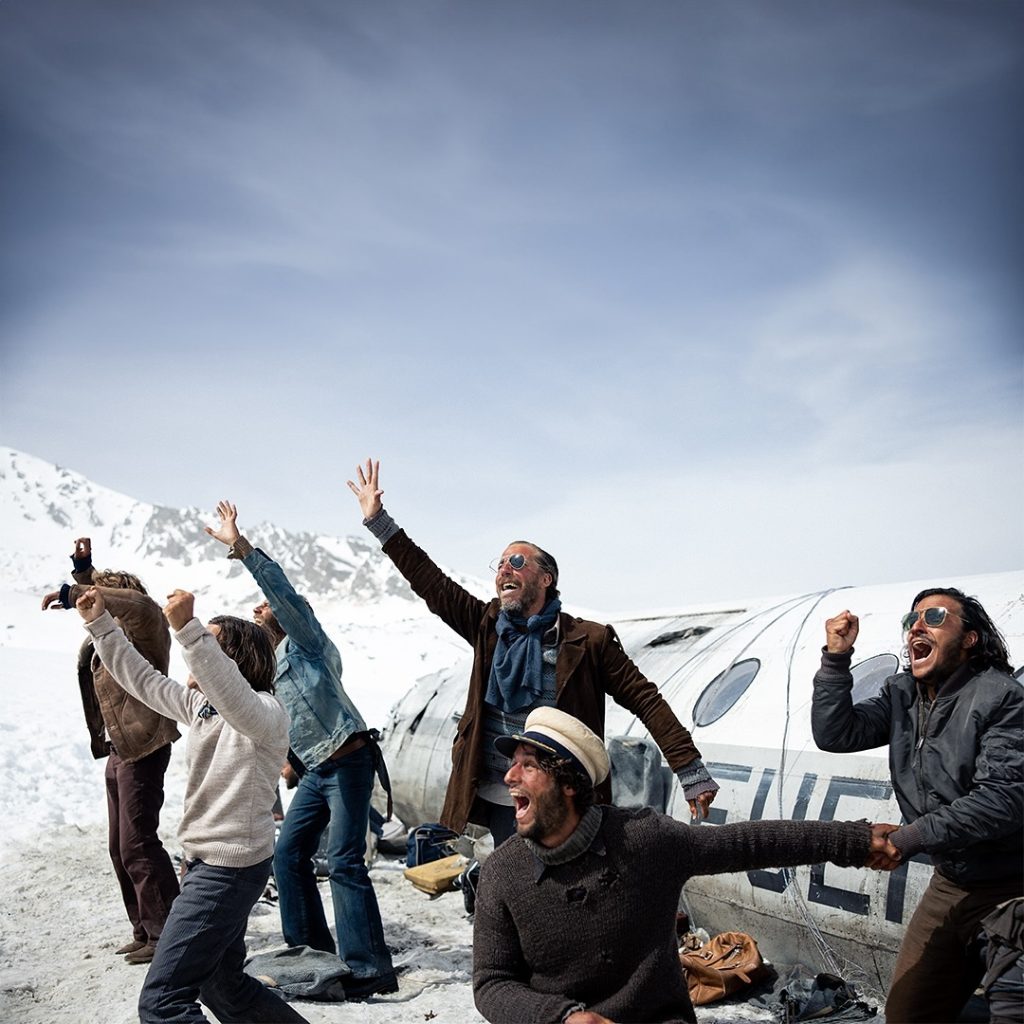“Society of the Snow Real Photos,” is not just a cinematic retelling of a tragic event; it also serves as a poignant reminder of the real human experiences behind the story. The film incorporates “Society of the Snow Real Photos,” which vividly captures the moments before, during, and after the harrowing plane crash that changed lives forever. These photographs reveal the faces of those who endured unimaginable challenges in the Andes mountains, offering a stark contrast to the dramatized portrayals.
Each image tells a story of courage, despair, and the bonds that formed in the direst of circumstances. As we delve into these real photos, we gain a deeper understanding of the survivors’ journey and the moral complexities they faced. The shocking reality depicted in these images challenges us to reflect on the human spirit and the decisions made in the name of survival.
Overview of the 1972 Andes Plane Crash

On October 13, 1972, a Uruguayan Air Force Fairchild FH-227D aircraft crashed in the remote Andes mountains. The plane carried 45 passengers, including the Uruguayan rugby team and their friends and family. Harsh weather conditions and navigational errors led to the tragic crash. The survivors, stranded in a snow-covered wilderness, faced unimaginable hardships. Temperatures plummeted, food was scarce, and hope seemed distant.
For ten grueling weeks, they fought against the elements and despair. Rescuers initially assumed there were no survivors, delaying search efforts. Finally, after over two months, the world learned of their astonishing tale of endurance. The crash site was unforgiving, testing the limits of human resilience. Against all odds, 16 survivors emerged, forever altering the narrative of human survival.
The True Story Behind “Society of the Snow”

The true story behind “Society of the Snow” is one of unimaginable hardship. The 1972 Andes plane crash involved a group of Uruguayan rugby players. When their plane went down, 45 individuals were left to fend for themselves. With severe weather and minimal supplies, survival seemed impossible. Yet, they fought against the odds.
Navigational errors and harsh conditions led to this dire situation. Rescuers believed there were no survivors, halting search efforts. For ten agonizing weeks, they endured freezing temperatures and scant food supplies. These survivors faced moral dilemmas that tested their humanity. They had to make heartbreaking choices to stay alive. The ordeal revealed incredible human resilience.
Ultimately, only 16 emerged from the mountains, their story forever etched in history. The crash and subsequent survival have since inspired books, documentaries, and now, this compelling film.
J.A. Bayona’s Direction and Vision

J.A. Bayona’s direction brings the true story to life with a gripping intensity. Known for his ability to balance emotion and tension, Bayona masterfully handles the delicate subject matter. He skillfully combines the stark realism of survival with deeply human moments. His vision incorporates real photos seamlessly, grounding the narrative in authenticity. Through meticulous research, Bayona ensures each scene resonates with the audience.
The use of actual images from the event creates a haunting realism. Bayona’s unique approach highlights both the harrowing and hopeful aspects of the story. He captures the raw human spirit, emphasizing resilience and camaraderie. His direction invites viewers to empathize with the survivors’ plight. The film’s visual and emotional depth owes much to Bayona’s expert storytelling.
The Role of Real Photos in the Film

- Grounding the Narrative:
Real photos anchor the film in reality. They bridge the gap between fiction and true events.
- Emotional Connection:
These photos evoke powerful emotions. They allow viewers to see the real faces behind the story.
- Visual Authenticity:
Authentic images enhance the film’s realism. They give a true depiction of the harsh conditions faced.
- Historical Context:
The photos offer historical accuracy. They showcase the actual crash site and search efforts.
- Storytelling Depth:
Real photos add depth to the storytelling. They highlight moments of despair, hope, and the human spirit.
- Viewer Engagement:
Authentic images captivate the audience. They create a more immersive viewing experience.
- Inspiration:
Seeing real survivors inspires resilience. It underscores the themes of survival and camaraderie.
Themes of Survival and Human Resilience

- Unimaginable Challenges:
The survivors faced extreme cold and hunger. They had limited resources and scant shelter. Adversity pushed them to their limits daily.
- Unyielding Willpower:
Despite dire circumstances, they fought to stay alive. Their determination was a testament to human strength. Every decision was crucial for their survival.
- Moral Dilemmas:
The decision to resort to cannibalism was agonizing. Survival instincts clashed with ethical considerations. It tested the boundaries of human morality.
- Inner Strength:
Each survivor tapped into an inner reservoir of strength. Their mental fortitude was as vital as physical endurance. The ordeal showcased the depth of human resilience.
- Hope and Despair:
Hope fluctuated amid their struggle. Moments of hope were interspersed with deep despair. Yet, they held onto every shred of optimism.
- Human Connection:
Bonds of friendship grew stronger under duress. These connections provided emotional support. They leaned on each other for strength and comfort.
- Adapting to Adversity:
Adaptability became key to their survival. They innovated with the limited resources available. This ingenuity was crucial in overcoming obstacles.
Friendship and Bonding in Adversity
In the bleak cold of the Andes, friendship was a lifeline. Struggling against nature, the survivors forged deep bonds. Shared hardships brought them closer, solidifying their unity. Each person became a source of strength for others. Despite the dire circumstances, camaraderie flourished. When hope waned, their friendships offered solace and courage. They leaned on one another for emotional and physical support.
These bonds were essential for their survival, giving them a reason to fight on. The extreme adversity turned teammates into brothers. Through teamwork, they managed the impossible, making harrowing decisions together. They shared laughter, tears, and everything in between. Their connection was a beacon of light amidst the darkness. The ordeal transformed their relationships, creating an unbreakable bond. In the face of unimaginable challenges, their friendship was a testament to human resilience.
The Impact of the Crash on Uruguay and Beyond
- National Shock and Mourning:
The 1972 Andes plane crash shook Uruguay deeply. The nation mourned collectively, with every family feeling the weight of the tragedy.
- Media Coverage:
The event received extensive media coverage. Newspapers, radio, and TV brought updates, keeping the story alive in public consciousness.
- Survivor Stories:
Survivors became national heroes. Their tales of endurance and moral dilemmas captivated audiences worldwide, turning them into symbols of human resilience.
- International Interest:
Beyond Uruguay, the story fascinated the world. It sparked discussions on survival, ethics, and the human spirit.
- Cultural Impact:
The incident influenced literature and film. Various books and documentaries delved into the survivors’ experiences, keeping the narrative alive.
- Sports Community:
The rugby world felt a profound impact. The loss of athletes highlighted the fragility of life and the spirit of sportsmanship.
- Legacy of Resilience:
The crash’s legacy endures. It serves as a reminder of human tenacity and the power of unity in adversity.
Comparison to Other Survival Films
- Emotional Depth:
“Society of the Snow” stands out for its raw emotional intensity. Unlike many survival films that focus on action, this film delves deep into human emotions, creating a powerful connection with the audience.
- Historical Accuracy:
This film excels in portraying historical accuracy. The use of real photos adds an unparalleled layer of authenticity, distinguishing it from others in the genre.
- Moral Dilemmas:
“Society of the Snow” tackles complex moral issues. Films like “Alive” also explore cannibalism, but Bayona’s portrayal offers a more nuanced look at ethical challenges.
- Human Spirit:
While films like “The Revenant” highlight individual endurance, “Society of the Snow” emphasizes collective resilience. The survivors’ camaraderie becomes a focal point, adding a unique dimension.
- Visual Realism:
J.A. Bayona’s direction ensures a gritty, realistic depiction. Other films, like “Cast Away,” focus on survival in isolation, but Bayona captures the harsh group dynamics amid adversity.
- Psychological Struggle:
Many survival films touch on mental challenges, yet few reach the psychological depth seen here. The internal battles faced by the survivors are poignantly portrayed, setting this film apart.
- Narrative Structure:
Unlike conventional survival tales, “Society of the Snow” weaves personal stories into the broader narrative. This multifaceted storytelling approach enriches the viewing experience.
Real Photos and Their Effect on the Audience
- Emotional Resonance:
The real photos evoke a deep emotional response. Viewers connect with the human faces, feeling their pain.
- Grounded Reality:
Authentic images anchor the film in truth. They bridge the gap between dramatization and actual events.
- Historical Authenticity:
These photos provide a historical context. They offer an unfiltered glimpse into the harsh conditions faced.
- Personal Connection:
Seeing real people makes the story personal. Audiences relate to the survivors’ struggles more intensely.
- Visual Impact:
The stark visuals of the crash site are haunting. They add a layer of realism that words alone can’t convey.
- Moral Reflection:
Photos prompt viewers to ponder ethical dilemmas. They challenge us to consider what we might do in similar situations.
- Increased Engagement:
Real images captivate the audience, enhancing their engagement. They make the narrative more immersive and compelling.
Interviews with Survivors and Filmmakers
- Firsthand Accounts:
Survivors shared their incredible stories during interviews. They recounted their emotional and physical struggles vividly.
- Moral Complexities:
Discussions often veered toward the ethical dilemmas they faced. These conversations highlighted the profound impact of their decisions.
- Director’s Insights:
J.A. Bayona offered a glimpse into his creative process. He explained how he balanced realism with cinematic storytelling.
- Emotional Weight:
Filmmakers discussed the emotional weight of the project. They felt a deep responsibility to honor the true story.
- Research and Preparation:
The cast and crew underwent extensive research. They delved into historical records and personal accounts to ensure accuracy.
- Impactful Narratives:
Interviews revealed how the film’s narrative evolved. Real survivor stories significantly influenced the screenplay.
- OnSet Atmosphere:
The filmmakers described a somber yet collaborative onset atmosphere. This environment helped them authentically capture the story’s gravity.
- Audience Reactions:
Early screenings sparked intense emotional responses. Audiences were moved by the raw, unfiltered portrayal of survival.
Final Thoughts on “Society of the Snow”
“Society of the Snow” masterfully blends raw emotion with historical accuracy. The film’s real photos bridge the gap between cinematic storytelling and reality, adding depth and authenticity. J.A. Bayona’s direction captures the harrowing ordeal with an intensity that grips the audience. The themes of survival and resilience are powerfully portrayed, inviting viewers to reflect on human tenacity.
The friendships forged in adversity highlight the strength found in unity. As a narrative, it stands apart for its emotional depth and nuanced exploration of moral dilemmas. The use of real photos makes the story deeply personal and engaging. This film is more than a recount of a tragic event; it’s a profound meditation on the human spirit. It challenges us to consider our values and the lengths we would go to survive.
Frequently Asked Questions About Society Of The Snow Real Photos
Real photos enhance the film’s authenticity by grounding it in reality. They provide a direct link to the actual events and people involved, deepening the audience’s emotional connection and understanding of the true story.
J.A. Bayona seamlessly integrated real photos to create a haunting realism. These images were used to emphasize key moments, providing historical context and adding emotional weight to the narrative, enriching the overall storytelling experience.
Real photos allow viewers to see the actual faces of those involved, making the story more personal and impactful. They evoke powerful emotions, encouraging viewers to empathize with the survivors’ plight and reflect on the moral complexities faced.
While some real photos are showcased within the film, others can be found in documentaries, books, and online archives related to the 1972 Andes plane crash. These sources offer additional insights and a broader historical perspective.
Conclusion About Society Of The Snow Real Photos
“Society of the Snow” presents a haunting yet powerful exploration of survival against insurmountable odds, rooted in the true story of the 1972 Andes plane crash. The film intricately weaves together real photos and testimonies, immersing viewers in the harrowing experience faced by the survivors. These images serve not only as a stark reminder of the tragedy but also as a testament to human resilience and the bonds formed in crisis.
The moral dilemmas encountered—particularly the desperate decision to resort to cannibalism—force us to confront the depths of human instinct and the will to survive. The film transcends a mere survival narrative; it delves into the emotional and psychological toll of such experiences, encouraging reflection on the fragility of life. Ultimately, “Society of the Snow” is both a tribute to those who endured the unimaginable and a poignant reminder of the choices people make in extreme circumstances.
Hey, Molar is the voice behind this all-encompassing blog, sharing expert insights and practical advice on business, real estate, and more. Dedicated to helping you navigate the complexities of these fields, Kelly provides the latest trends, in-depth analyses, and creative strategies to elevate your ventures.
